“Say something, or I shall get bored. And when I get bored, I get hungry!”
– Kaa, The Mighty King of the Jungle; The Jungle Book –
So here we go! Let’s talk about snakes.
Scared? Excited? Read on! ’Cuz if you slither in the tracks of a snaky stranger, you might learn things you never knew.
Snakes are found all over the world, and Sri Lanka is, of course, no exception. Sri Lanka is a little tropical island paradise, removed from mainland Asia. These geographical features have defined the unique diversity and distribution of the snakes living here. Sri Lankan snakes are of 6 superfamilies and 11 families as shown below.

Sri Lanka has a total of 108 species of snakes, up to date, out of which 58, are endemic to our little island. The snakes in Sri Lanka belonging to the superfamily Uropeltoidea are entirely endemic, and so are most of the snakes in the superfamily Typhlopoidea. There are also some endemic snakes belonging to the superfamily Colubroidea. The superfamilies Acrochordoidea, Booidea, and Pythonoidea each have only one species in Sri Lanka, and all three are not endemic.
Snake life in Sri Lanka occurs both on land and in water. This habitation has allowed us to identify 3 main groups of snakes; Land Snakes, Sea Snakes, and Wart Snakes. The group of land snakes occupies the inland of the island including all terrestrial, arboreal, and freshwater ecosystems. A highly venomous group of sea snakes have established themselves in the Indian Ocean surrounding the island and reports suggest that about 15 species belong to this category. All these 15 species are members of the family Elapidae. The third group, wart snakes is also an aquatic group of snakes.
So what makes wart snake differ from sea snake if both are aquatic?
While sea snake rules the ocean, wart snake has taken control over the lagoons, estuaries, and riverbanks close to the sea.
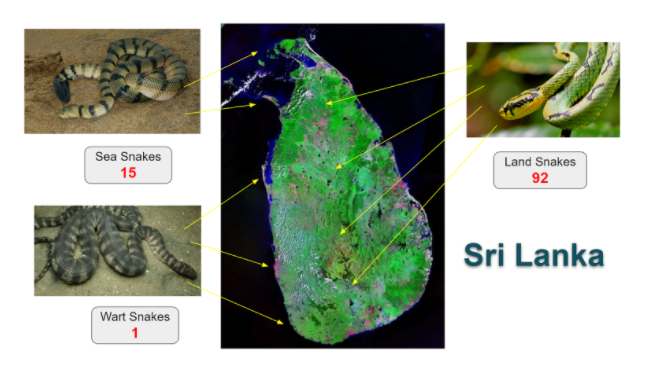
The normal reaction we have when we see a long slithering creature on the ground is to scream “Snake!!”, but do you know that a majority of snakes are not venomous? There are members of the snake world who do not deserve that reaction at all. Depending on the degree of venom, the snake species could be grouped into 4 as; Deadly venomous, Potentially highly venomous, Slightly venomous, and Non-venomous.

Myths and misconceptions have been the enemies of snakes for years and this, unfortunately, has harmed them. According to the IUCN red data list of 2012, 10 of our snake species belonging to the families Uropeltidae, Colubridae, Elapidae, Gerrhopilidae, and Viperidaeare critically endangered. Seventeen are on the list of endangered species and 9 are on the vulnerable list. The reasons behind this threat include persecution, habitat destruction, urban development, disease, illegal trade, and the introduction of invasive species.
Well, do we need to save them?
Snakes play an integral role in ecology. Their well-developed senses make them effective hunters and ambush predators of the ecosystem. Hence, they act as population controllers by keeping the numbers of their prey in check, so they do not reach unnatural levels. They are not the top predators and can also be the prey to several other predator species which further specifies their role in the food chain. The existence of snakes is crucial for the balance of the ecosystem. So, no matter whether you hate or love them, let us respect them.
Here are some snake species of Sri Lanka to pique your interest!
The Largest Snake:
The Indian Rock Python (Python molurus molurus)
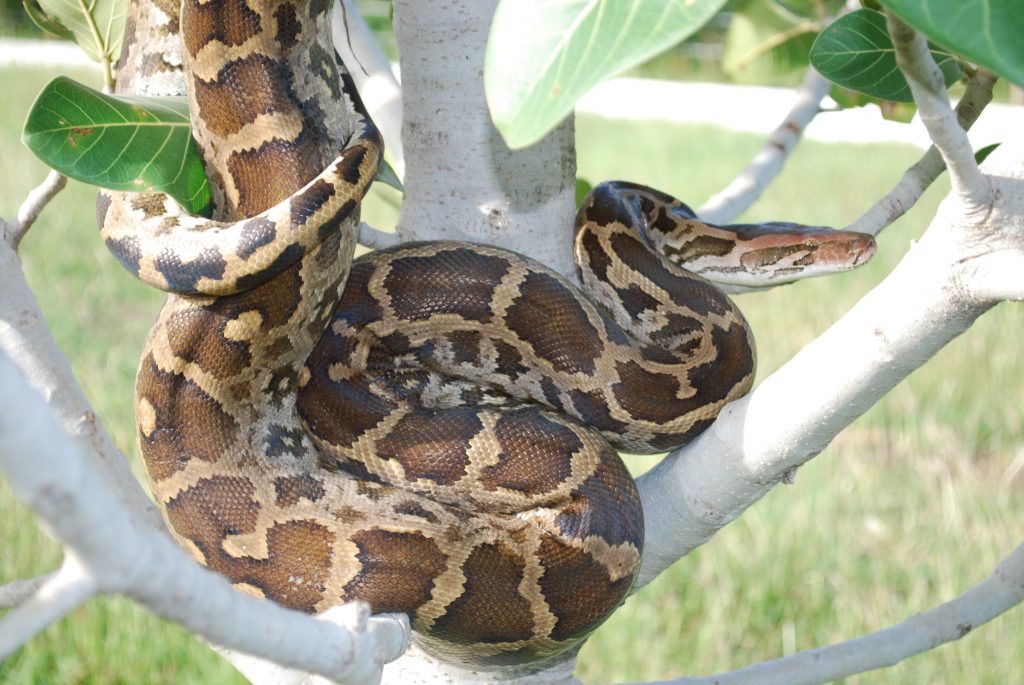
The average length of the adult is 3m. The longest recorded is 4.6 m. It lives in various ecosystems from rainforests to coastal scrublands.
Small and Blind Snake:
There are many blind snake species in Sri Lanka, all of which are small. In reality, their eyes are vestigial or buried under head scales. This is because they live a fossorial lifestyle.
Sri Lankan Worm Snake (Indotyphlops lankaensis)

An endemic, non-venomous snake that is blind. It is confined to the arid lowlands of the dry zone of Sri Lanka. It is one of the Typhlops snakes, which are generally small and grow up to only 4 to 6 inches in length.
Most Attractive Snakes:
Sri Lankan Green Pit Viper (Trimeresurus trigonocephalus)
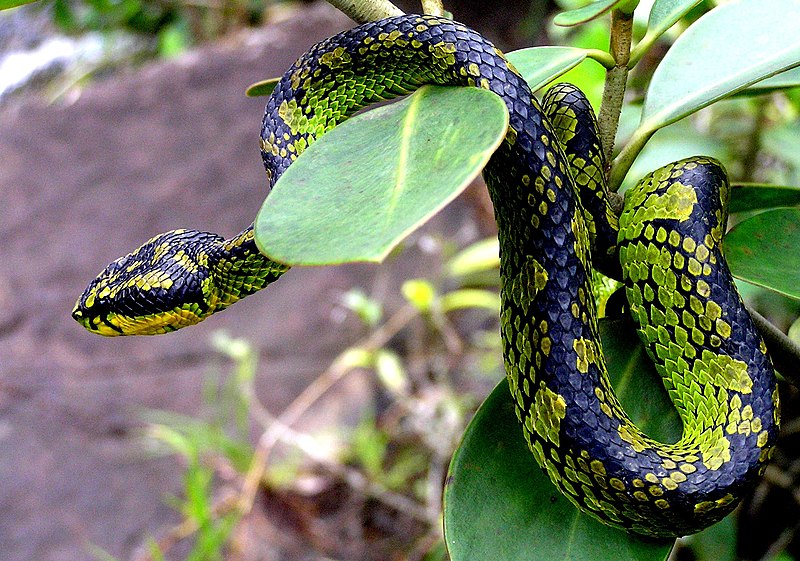
A venomous endemic species of Sri Lanka. It is one of the most colorful and attractive snake species. It is nocturnal and arboreal and occasionally descends to the ground to search for food. Can be found in the wet, intermediate, and dry zone forests and submontane forests. It is also found in tea, coffee, and cocoa plantations.
Most Venomous Snakes:
Common Indian Krait (Bungarus caeruleus)
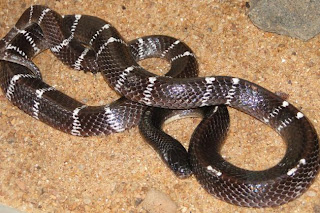
A species of deadly venomous snakes living in Sri Lanka. The venom consists of powerful presynaptic and postsynaptic neurotoxins which affect the synaptic cleft and result in muscle paralysis. It feeds on other snakes including blind snakes and other kraits. They also feed on small mammals.
Flying Snake:
Sri Lankan Flying Snake (Chrysopelea taprobanica)
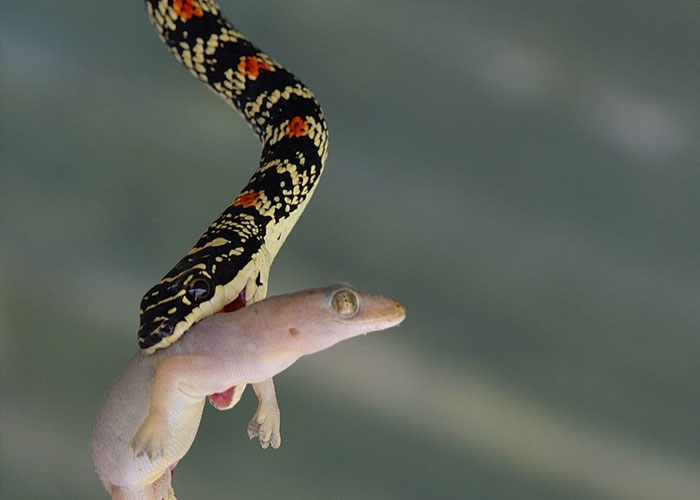
A gliding snake species that is endemic to Sri Lanka. It is found in the dry zone and parts of the intermediate zone in the country. They are diurnal and live mainly on trees. They don’t actually fly but can be seen making long graceful glides between trees.
An Infamous Snake:
Indian Cobra (Naja naja)
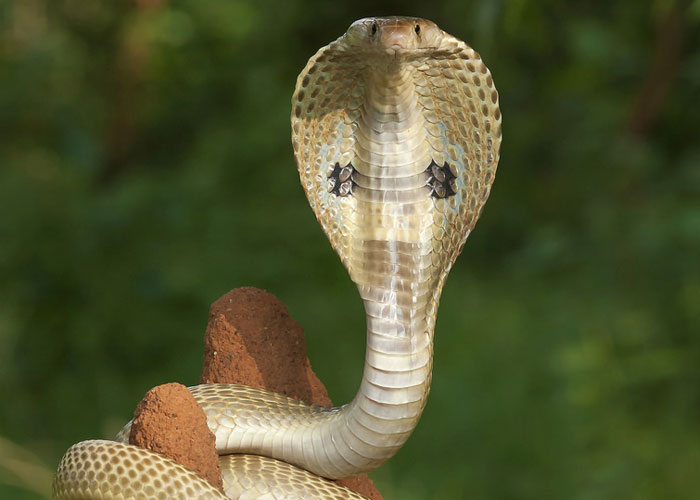
It is also known as Spectacled cobra. Its most prominent characteristic feature is the hood. It is deadly venomous and is revered in Indian mythology and culture.
Snakes are found everywhere, be it in villages with the biggest gardens, or cities that are choked up with concrete. We are sure all of us have experienced snakes on one or more occasions in our lives. Some of these memories you might laugh at, and some might still scare the wits out of you. We still remember and laugh at the time the two of us found a snake in the kitchen and nearly broke our bones, running for our lives. Do you have such memories? Let’s share them in the chat below!
Written By:
Raiza Lareef
3rd Year Undergraduate (Immunology and Integrative Molecular Biology Honors),
Department of Zoology and Environment Sciences,
Faculty of Science,
University of Colombo.
and
Nuha Nawzar
3rd Year Undergraduate (Immunology and Integrative Molecular Biology Honors),
Department of Zoology and Environment Sciences,
Faculty of Science,
University of Colombo.
References:
- Biodiversity Secretariat & Department of National Botanic Gardens – Peradeniya, Sri Lanka. (2012). The National Red List 2012 of Sri Lanka. Karunarathne and Sons Pvt (Ltd). http://www.cea.lk/web/images/pdf/redlist2012.pdf
- Sri Lankan green pit viper. (2015). Project Noah. https://www.projectnoah.org/spottings/602486038
- Save The Snakes. (2020, July 25). Why Snakes? https://savethesnakes.org/s/why-snakes/
- . . ..::::::Endemic Typhlopid Snakes of Sri Lanka ::::::. . .. (2011). www.slendemics.net. https://slendemics.net/easl/reps/Typhlopidae.html
Image Courtesy:
- Title Image: https://www.imago-images.de/bild/st/0094120024/s.jpg
- 1st, 2nd, & 3rd Content Images: Authors
- 4th Content Image: https://bit.ly/3kXs5cn
- 5th Content Image: https://bit.ly/3y5HICr
- 6th Content Image: https://bit.ly/3kTwEEw
- 7th Content Image: https://bit.ly/3kU7cis
- 8th Content Image: https://bit.ly/3i2BUnt
- 9th Content Image: https://bit.ly/3y97oOs


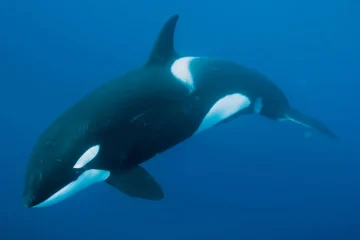
0 Comments